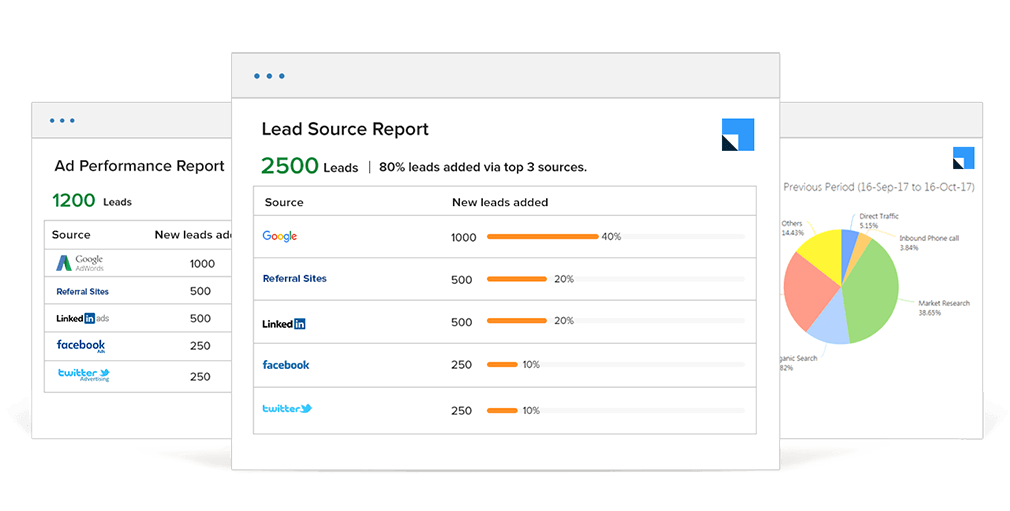In an ideal world, the sales cycle would look like this:

But in the real world, this graph is far from straight. There can be tens to hundreds of touchpoints, conversations and back & forths. And at any given point, a salesman is tackling not one, but several such prospects. So, your sales cycle ends up looking like this:
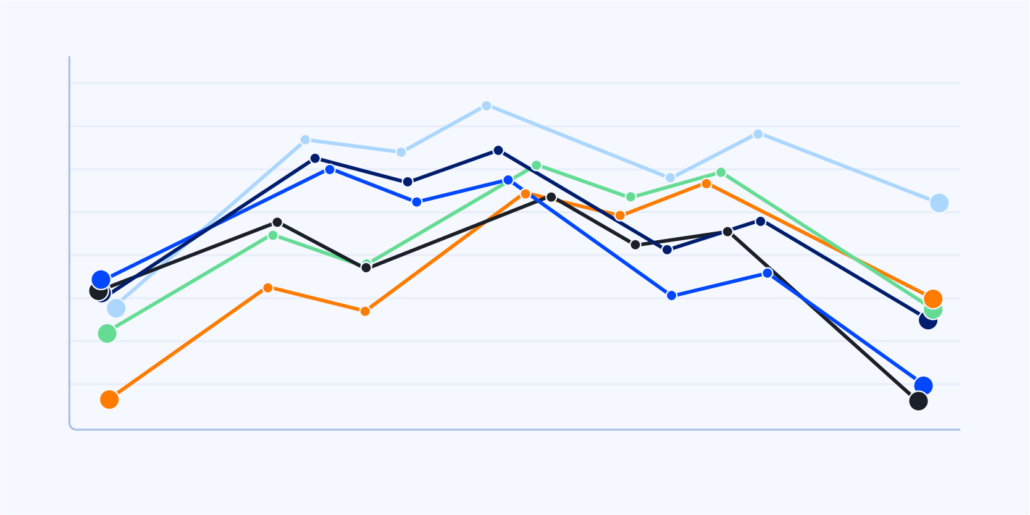
You know this already, of course. But most sales managers get caught in the loop of meeting targets instead of improving the sales process because they lack the data to do so. An automated sales tracker is just the tool they need to identify the pain points and bottlenecks to improve sales processes.
Every lead source, sales touchpoint, and customer activity are an integral part of your sales process, that your sales tracker can track and eventually improve with historical data.
While most businesses have some form of sales tracking in place, a shocking number still rely on Excel sheets or generic CRMs that don’t cut the bill. This article covers everything you need to know about sales tracking and the best tools in the market that’ll help you track sales activities effectively.
What is a Sales Tracker?
A sales tracker is a tool which gives you complete visibility into your sales process. It tracks all the important activities involved in closing a deal—right from the incoming inquiries, conversations that happen between your team and the prospect (calls, text messages, emails and more), to face-to-face meetings (using mobile tracking), and operational activities, like document collection etc.
In the case of repeat-sales businesses, like insurance, banking, lending, travel, real estate, education, healthcare etc. the sales tracking extends beyond the first closure to include cross-sell and upsell signals.
Sales tracker is not just a monitoring tool. Collective insights from your existing opportunities can also help you determine the buying trend of your customers, the drop-off points and the effectiveness of your sales team.
How Does a Sales Tracker Benefit Your Business?
A sales tracker benefits your business in innumerable ways! Here are a few positive changes you can expect as soon as you implement one for your team.

Important Sales Metrics That You Should Track
Keeping a close watch on the major sales junctures not only strengthens your sales process but also equips sales leaders with the right information to make key decisions.
To make the most out of your sales tracking process, here are a few questions you should answer before setting up a sales tracker:
- Have I designed my sales funnel and lead stages as per my unique business process?
- Have I identified all the important deal make/break junctures?
- Does my sales team share all the important sales information?
- Am I aware of every conversation that my team has with prospects?
- Am I sure that the scheduled meetings/calls are taking place?
A sales tracking system, if set up properly can have a dramatic impact on your sales outcomes. Here’s what you can track:
Quantity Metrics
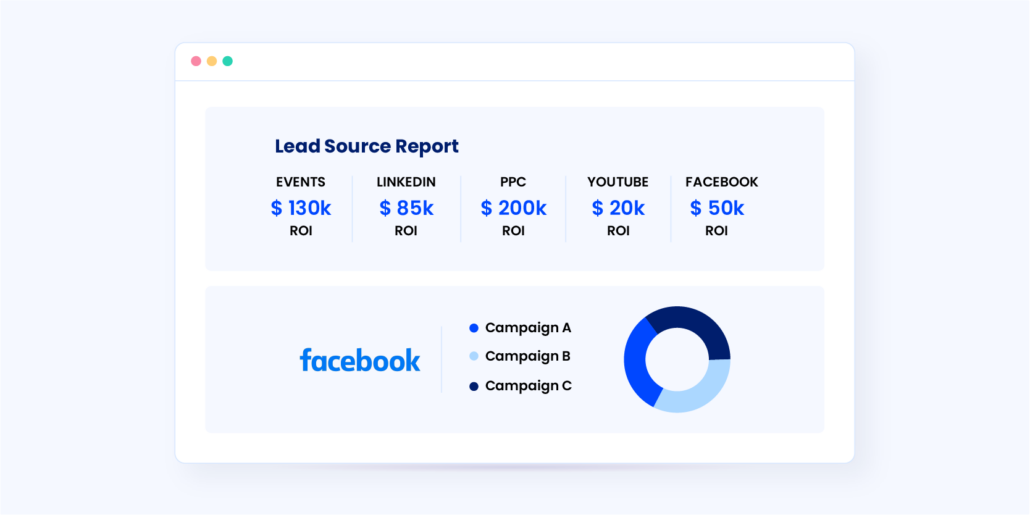
1. Revenue source
This is an indication of the sources generating most sales for you. It is shared by sales and marketing together, where the marketing focuses on the number of leads and sales team on the number of opportunities.
2. Opportunities
This metric shows the number of opportunities generated in the given time. In a way, it tracks the effort of the sales team in pushing the warm leads to hot leads.
3. User performance
Sales managers can use this metric to gauge individual sales rep performance – the number of calls they make, the number of emails they send, the distance they travel (relevant for field sales) and ultimately the revenue they generate.
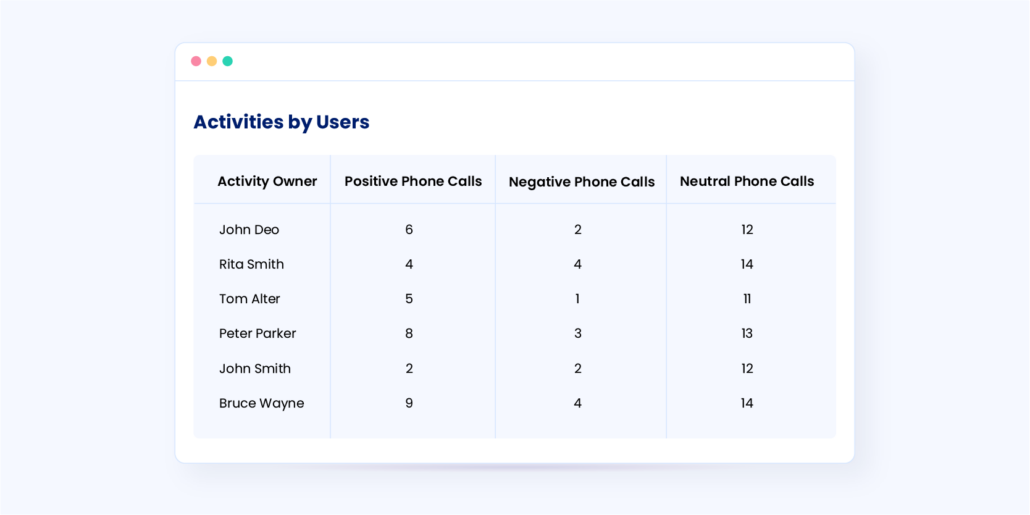
Quality Metrics
4. Lead to opportunity conversion
It helps you understand the effectiveness of your team to push the sale forward. It is the number of people who show genuine interest divided by the total opportunities generated.
5. Opportunity to customer conversion
Indicates the number of opportunities that your sales team creates against the number that actually ends up closing. It’s a reflection of how potent your team is in delivering the final punch.
6. Communication tracking
Sales tracker records all the conversation happening with the prospect and the sales team which includes phone calls, email exchanges, text messages, online chat etc. This gives information about the quality of conversations and helps you make improvements or amends if needed.
Features of an Ideal Sales Tracker
1. Complete Visibility into the Lead/Sales Funnel
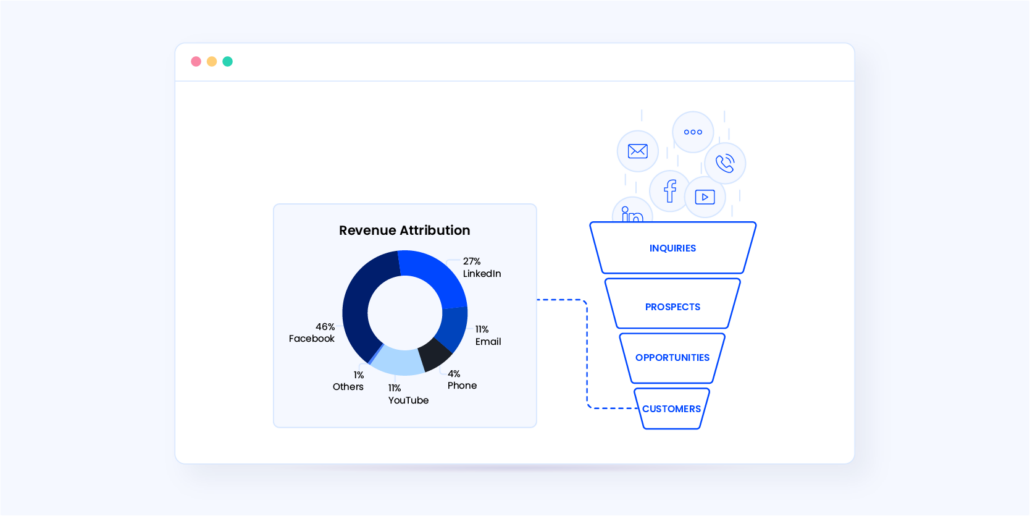
You might have a range of leads pouring in every day. Some of them go unnoticed, unfollowed, and unattended. This is called lead leakage.
Out of the ones which you follow, you might not know their source of origin and conversion. A lot of times you might even be unaware of their progress, and their status in your sales funnel.
Sales tracker helps you plug the lead leakage and provides the correct attribution to the source.
2. Sales Performance Reports and Trackers
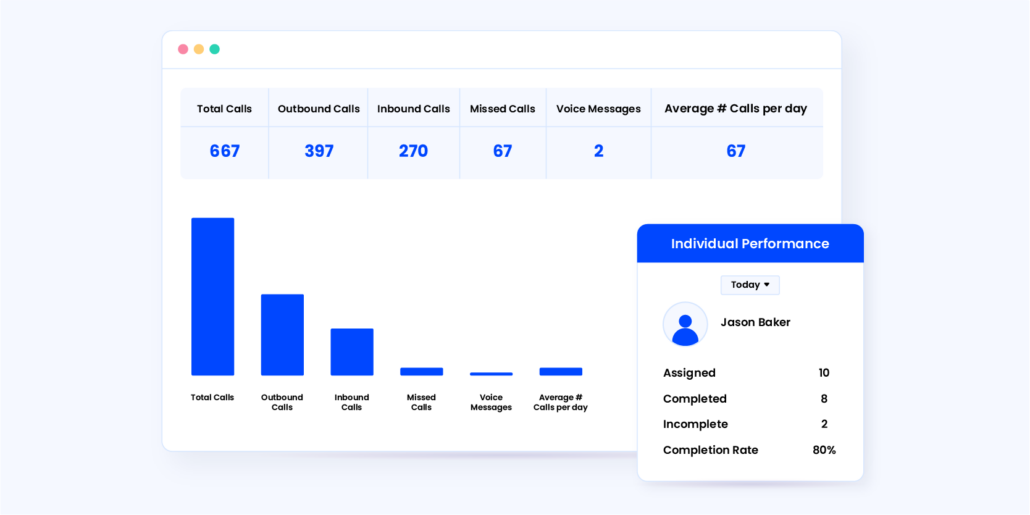
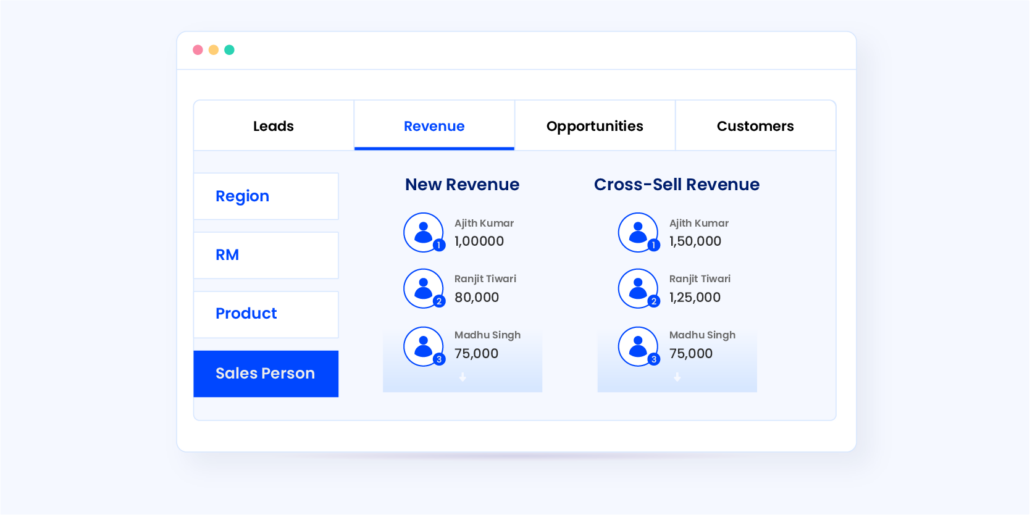
Sales performance includes everything related to user performance: the total calls needed to be made to close a sale, total calls being made on an average by your team and your individual salespeople, the products being sold the most, the regions bringing in the most business, the salesperson bringing in the most business, the task completion ratio of individual reps and much more.
You also have complete real-time visibility into every salesperson’s performance at every single point. So, you’ll know the reps leading the sales-board and the ones lagging behind. Gamification in some sales trackers would also allow your reps to measure their performance against their colleagues, motivating them to do better, thereby increasing the overall sales.
3. Geo-tracking and recommendations
The missing piece of the sales puzzle for businesses using even the most advanced CRM as their sales tracker is real-time tracking of field sales. Though many CRMs provide field sales solutions in terms of mobile apps, the scope of functionality is limited at best, with generally no link to the web activities by the salesperson and the prospect. This creates silos for online, offline, telephonic activities, and divides between different teams, that can severely limit the success of your sales strategy.
Instead, what if you had a sales tracker, that not only lets you track the movements of your field workforce real-time, but also makes live suggestions to them for each meeting, based on historic conversations with the prospect? It can even plan out salespeople’s daily meeting schedules and the best routes to follow to get the most productive outcome. Not just this, it can even spot nearby prospects, and make suggestions to the salespeople to visit if their schedule has the room.
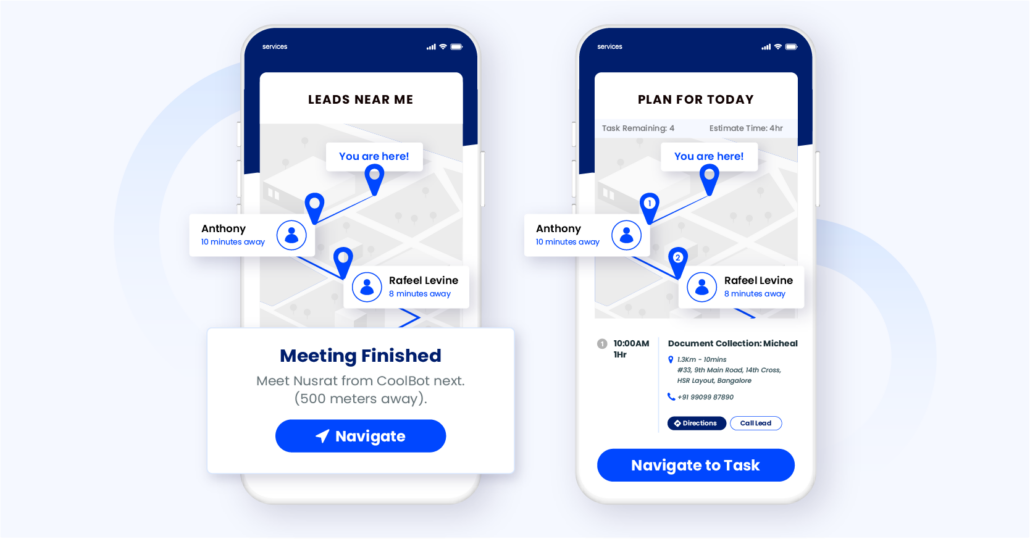
4. Geo-fencing
Not only will the complete sales tracker guide your field workforce to carry out their tasks more productively, but it’ll also give you glimpses into what’s going on in the field real-time, including where all are your salespeople checking in. The geo-fencing feature would also avoid accidental or deliberate misrepresentation of the meetings since the salespeople can only check-in if they have reached the proper location.
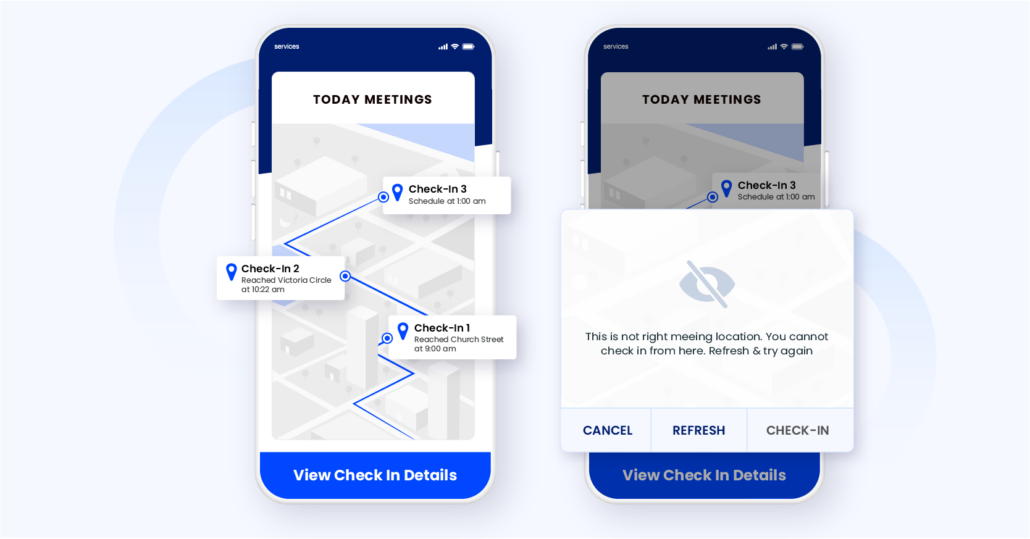
5. Revenue analysis
Your sales tracker won’t just give you the number of sales, but revenue generated as well—against each product, each region, each team, and salesperson, and any other variable important to you.
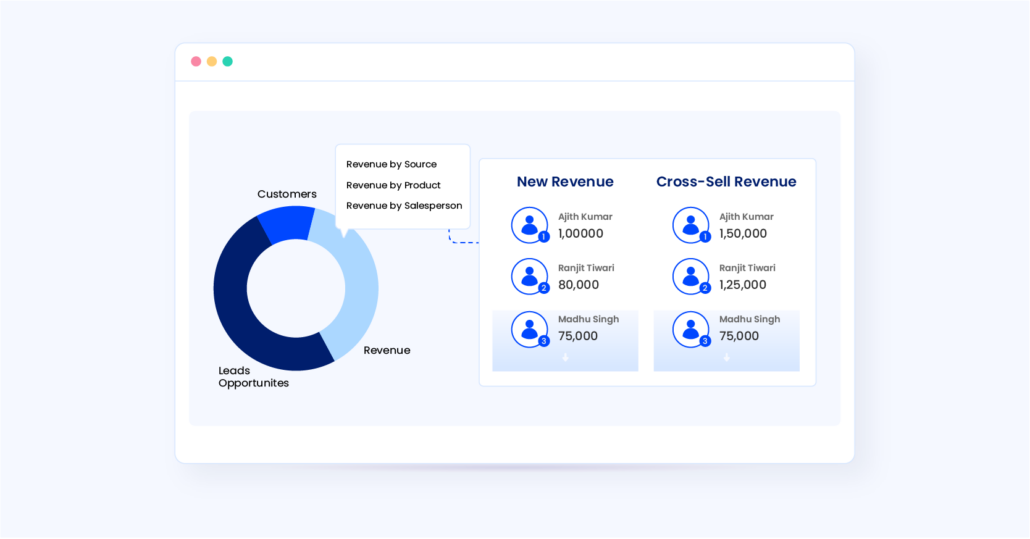
Equipped with these reports, not only will you have an absolute clarity of what’s going on in your sales organization, but you’ll also be able to identify the shortfalls, and improve the sub-optimal parts of the sales-engine.
6. Sales Recommendations
Your sales tracker should not just track activities, but give recommendations to your salespeople as well based on prospect’s activities. This would not just make your salespeople’s pitch super-relevant but would help you increase the customer lifetime value and improve customer experience.
An ideal sales tracker should track activities of the prospects not just on your properties (website, emails, text messages etc.), but also on 3rd party sites like various social channels and news sites. This would help enrich the data and give a very realistic view of the prospect to your salespeople.
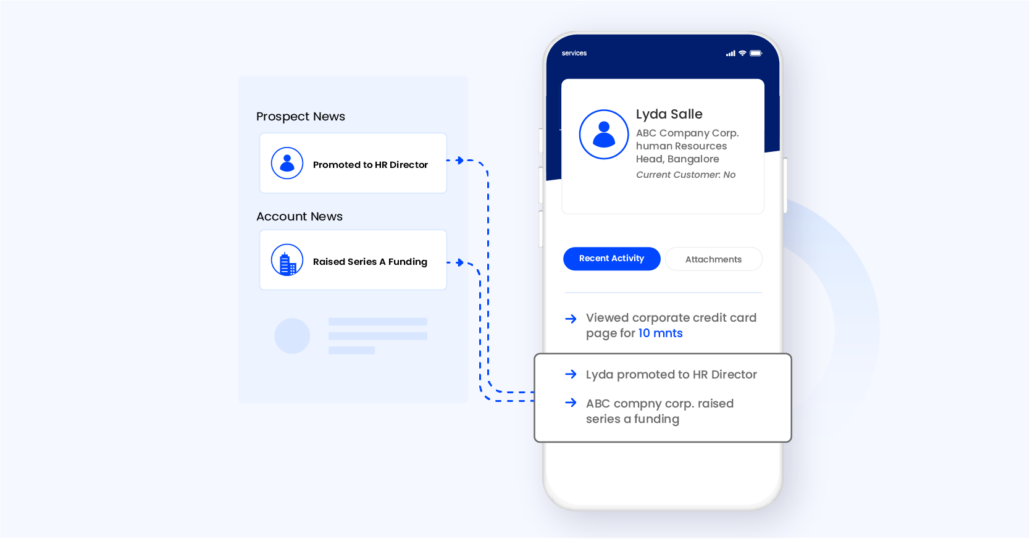
7. Encourage Usage by Gamifying sales
A sales tracker will be deemed redundant if your sales team isn’t actually entering their data into the platform. It all depends on the tool that you choose. Is it easy to use and an interactive platform? Does it motivate your sales team to record their sales data?
It helps if your sales tracker has a leadership board or a milestone tracker to recognize your top performers. LeadSquared’s sales performance suite, Ace, also allows salespeople to visualise their target versus achievements to motivate them and make the sales process fun.
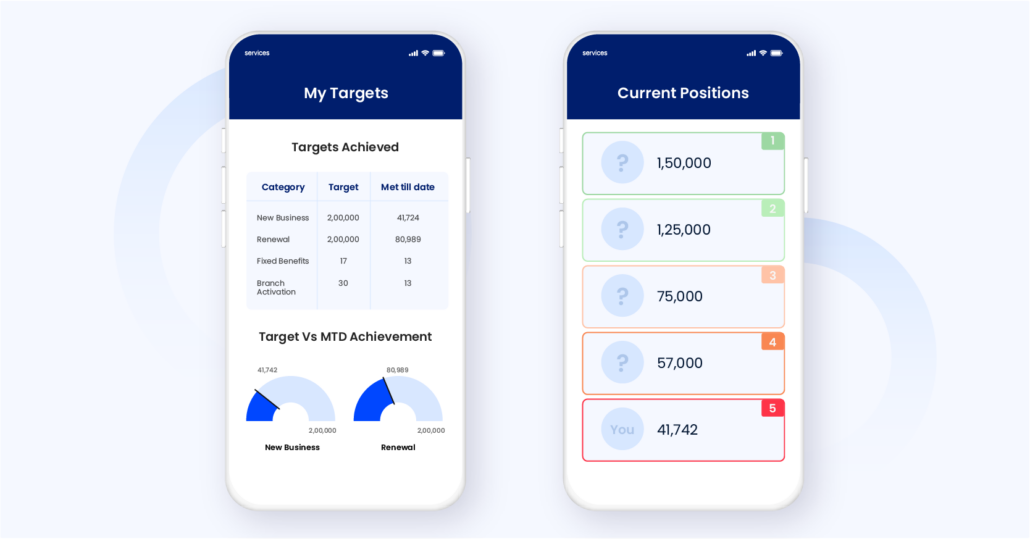
Along with having these features, your sales tracker tool should also be extremely customizable and allow you to edit the sales performance dashboards based on the metrics that you want to track. A mobile-based sales tracker, that can be accessed from anywhere at any time should be in your tool checklist too, especially if you focus on field sales.
Let’s explore a few sales tracker tools that come with all these features, and more.
Top 6 Sales Tracker Tools to Consider
While features and ease of use are important while choosing a sales tracker, so is scalability and pricing. Here’s a list of our top 6 picks for sales trackers that fit both large and small businesses alike.
1. LeadSquared
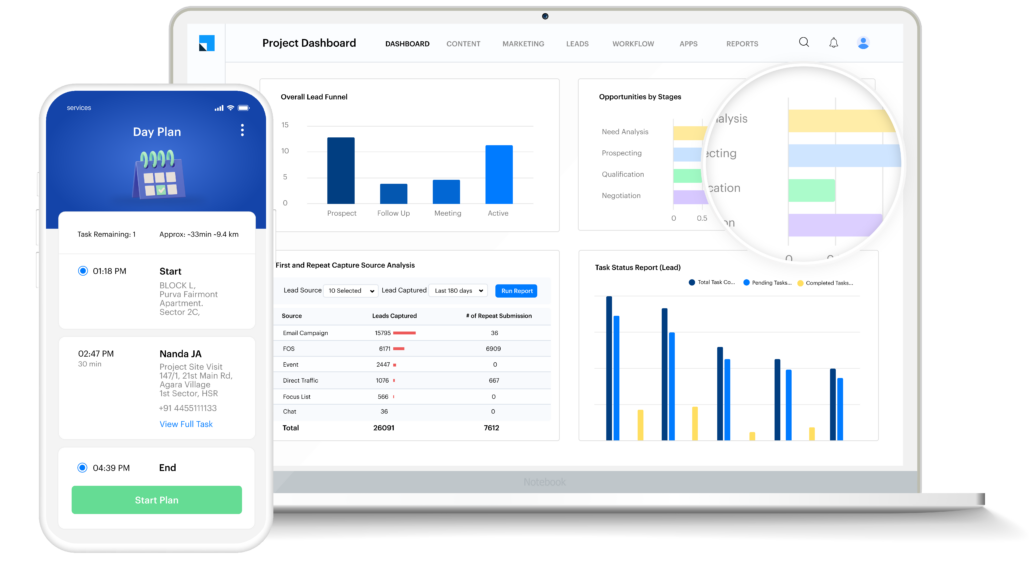
LeadSquared is an end-to-end sales execution platform built to scale with companies. The company offers extensive views of customer journeys and the sales funnel on its dashboard. It allows you to track the number of leads at each stage, automatically change the lead from one stage to another, analyze churned leads from the funnel, and provide detailed reports on what strategies have been working.
Key features of LeadSquared:
- Pipeline management
- Sales journey tracking
- Reports and analytics
- Geo fencing and Geo tagging
- Lead management
Price:
- Lite: $25 per user/month
- Pro: $50 per user/month
- Super: $100 per user/month
2. Salesforce
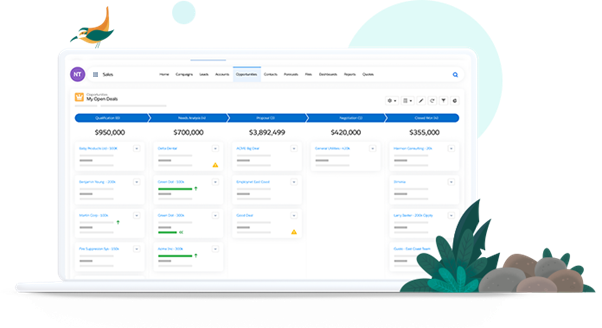
Salesforce is one of the most popular CRMs in the market. With its tailored solutions and high pricing, it is suitable for enterprises that want a lot of customization. Apart from in-depth reports and analytics on business performances, the CRM also provides sales forecasting based on past and current pipeline data.
Key features of Salesforce:
- Pipeline management
- Forecast management
- Customer journey mapping
- Lead tracking
- Workflow automation
Price:
- Essentials: $25 per user/month
- Professional: $75 per user/month
- Enterprise: $150 per user/month
- Unlimited: $300 per user/month
3. HubSpot
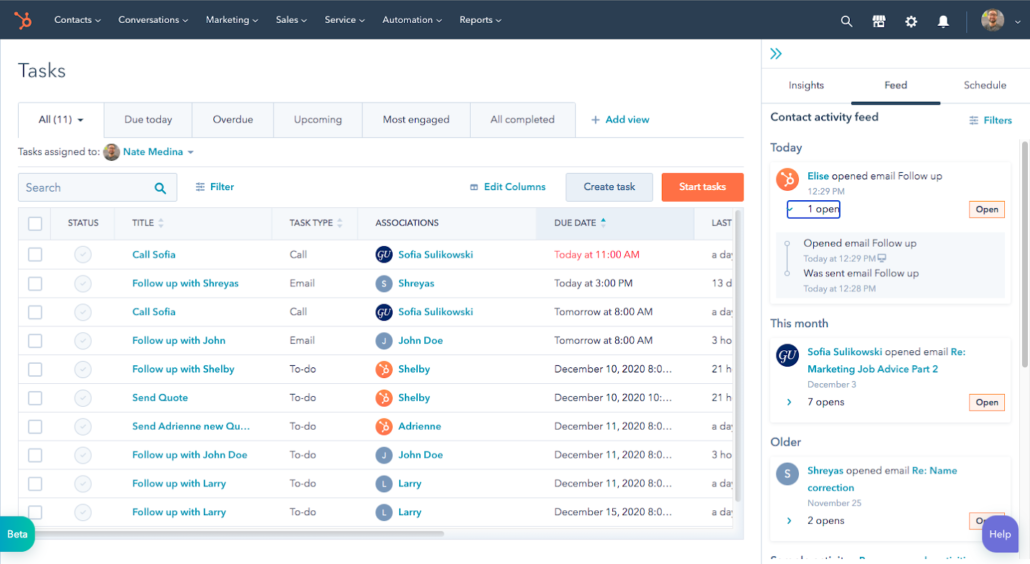
Although HubSpot CRM is more known for its marketing capabilities, it also provides in-depth visibility into your sales productivity, conversion rates, sales quotas, and more. One unique aspect of this software is that since it also provides lead generation, you can track even the finer details, like engagement on your social media platforms and the leads generated from every marketing effort.
Key features of HubSpot:
- Sales forecasting
- Lead scoring
- Marketing automation
- Pipeline management
- Lead nurturing
Price:
- Free – $0 per month (up to 2 users)
- Starter – $20 per month
- Professional – $500 per month
- Enterprise – $1200 per month
4. Pipedrive
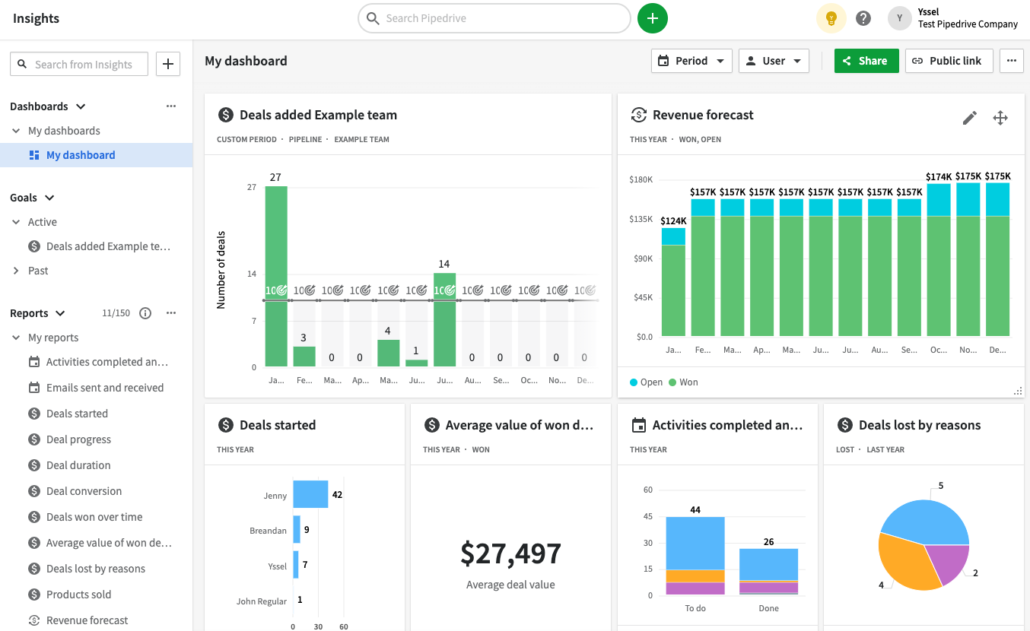
Pipedrive is another sales relationship management software best known for its pipeline management. Commonly dubbed as the CRM “made by salespeople, for salespeople,” Pipedrive’s pipelines allow users to understand where there are hindrances and what parts they should focus more on. Furthermore, you can tailor the pipelines according to your needs.
Key features of Pipedrive:
- Pipeline management
- Sales automation
- Lead capturing
- Lead tracking
- Deal management
Price:
- Essential: $9.90 per user/month
- Advanced: $19.90 per user/month
- Professional: $39.90 per user/month
- Enterprise: $59.90 per month
5. EngageBay
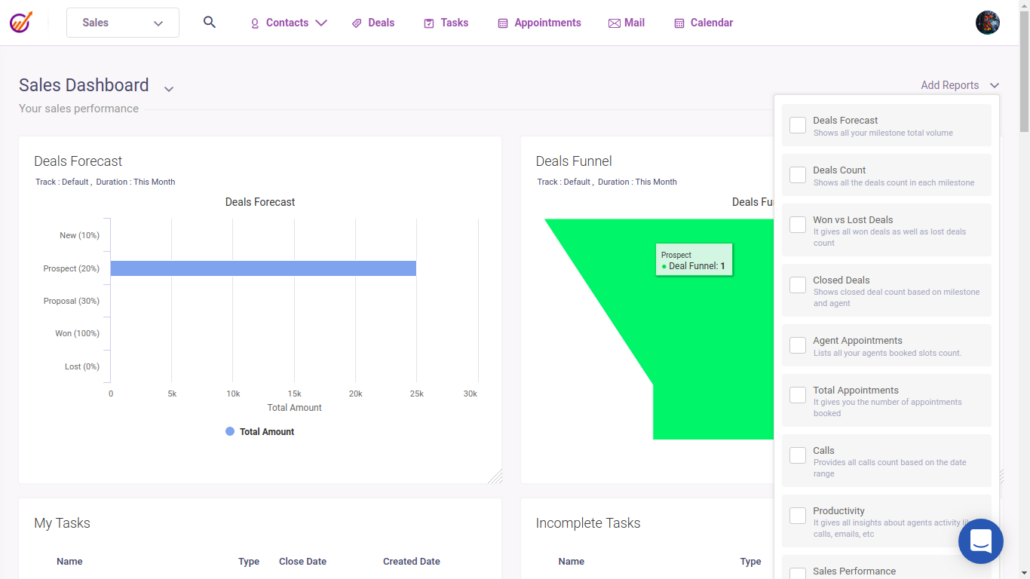
Although EngageBay has few integrations, it offers very competitive pricing, which makes it a good sales tracking software for small businesses. This software allows you to view the leads that are coming into your pipeline, provide reports on the conversion rates from one stage to another, and understand the duration of your sales cycle.
Key features of EngageBay:
- Email marketing automation
- Sales force automation
- Lead tracking
- Pipeline analytics
Price:
- Free: $0 per user/month
- Basic: $12.74 per user/month
- Growth: $42.49 per user/month
- Pro: $84.99 per user/month
6. Creatio
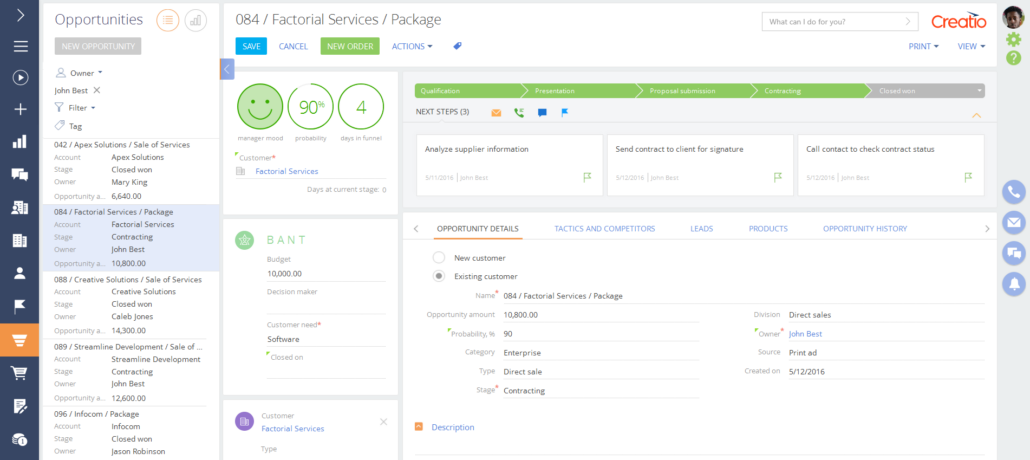
Creatio’s low-code customizing capabilities allow you to fine-tune each module to fit your process perfectly. This is particularly useful when you want to provide weights to certain aspects of your lead’s customer profiles, track custom metrics in your sales pipeline, and trigger specific sequences based on customer interactions. Plus, it also provides reporting features to track your field sales team as well.
Key features:
- 360⁰ customer view
- Business process management
- Lead management
- Geo tracking
- Sales forecasting
Price:
- Team: $30 per user/month
- Commerce: $35 per user/month
- Enterprise: $60 per user/month
Ready to Track Your Sales?
Sales tracking covers everything that happens before a lead turns into a customer. Reports tell you the end result, while sales pipeline tell you the current scenario. But to retrospect and identify the loopholes in your process, you need a solid sales tracking mechanism which enables you to monitor and coach your team at the same time.
If you’re looking for a tool that tracks, monitors, and reports every sales activity with ease, you should give LeadSquared a shot today!
FAQs
A sales tracker is a tool that allows salespeople to monitor and track all sales related activities. The insights also help salespeople structure and personalise their sales pitch to close deals faster.
A daily sales tracker breaks down your quarterly sales targets into daily tasks that can be tracked automatically. You can also track sales metrics and visualise them in a dashboard to ensure that your team stays on track and crushes their targets.
While you can use an Excel sheet to track your sales activities, by either using a template or building a spreadsheet from scratch, the process is generally slow and manual. Instead, businesses can opt for a solution such as a CRM that automates sales tracking and provides managers with complete visibility to manage sales performance.






